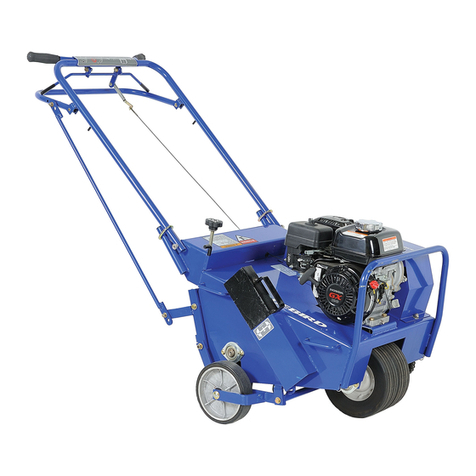
Lawn Aerators
WARNING: Engine exhaust, some of it’s constituents, and certain vehicle components
contain or emit chemicals known to the State of California to cause cancer and birth defects
or other reproductive harm.
Section 1 · Operator’s Guide Page
Specifications ................................................................................................. 3
FeaturesandControls ................................................................................. 4-6
GeneralInformation ........................................................................................ 7
SafetyProcedures.......................................................................................... 7
SafetyandInstruction Decals ........................................................................ 8
Decal Placement............................................................................................ 9
Assembly Instructions.................................................................................. 10
Section 2 · Operating Instructions Page
AerationTips ................................................................................................ 11
BeforeYouStart ........................................................................................... 11
Aerating........................................................................................................ 11
ThrottleAdjustment(Model742Hondaengine only)..................................... 11
RearWheelAdjustment................................................................................ 12
TurningandManeuvering .............................................................................. 13
OperatingonHills......................................................................................... 13
Section 3 · Maintenance and Service Instructions Page
Transportingthe HusqvarnaAerator .............................................................. 14
Cleaningand Washing ................................................................................. 15
Two MinuteWarning ..................................................................................... 15
Storage ......................................................................................................... 15
PreventativeMaintenance Schedule
InspectionSchedule ......................................................................... 15
Lubrication Schedule ........................................................................ 15
TineWear ........................................................................................ 16
Service Engine Service & Maintenance.................................................... 16
Drive Train
EngineRemoval andReplacement ................................................... 16
DriveBelt ReplacementandAdjustment........................................... 16
Clutch Cable Removaland Replacement .......................................... 17
ThrottleCable Replacement(Model742 HondaEngine Only) .......... 17
ChainRemoval andReplacement..................................................... 17
AdjustingChainTension ................................................................... 18
Handle
Inspection ........................................................................................ 18
Adjustment....................................................................................... 18
Wheels
DriveWheel ShaftRemoval andReplacement .................................. 18
RearWheel Removaland Replacement ........................................... 19
Tine andTine Shaft
TineReplacement ............................................................................ 19
TineShaft BearingRemoval andReplacement ................................. 19
FreeWheeling TineAssemblyRemoval andReplacement ............... 20
UnitAssembly and Parts Diagrams
Model424 ................................................................................... 21-25
Model530A................................................................................. 26-33
Model742 ................................................................................... 34-39
Section 4 · General Product Information Page
Warranty ...................................................................................................... 41































